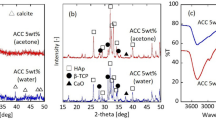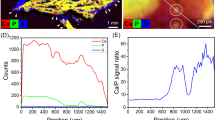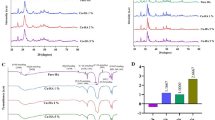Abstract
THE formation of lamellar mixed crystals of hydroxy-apatite and Octacalcium phosphate have been postulated by Brown et al.1 to account for ‘defect apatites’ and other properties of precipitated calcium phosphate salts. One of the mechanisms they suggested for the layering is that of epitaxial overgrowths, since some similarity of structure was recognized. The similarity which Brown2 demonstrated, however, is not nearly so striking as the similarity that can be shown.
This is a preview of subscription content, access via your institution
Access options
Subscribe to this journal
Receive 51 print issues and online access
$199.00 per year
only $3.90 per issue
Buy this article
- Purchase on SpringerLink
- Instant access to full article PDF
Prices may be subject to local taxes which are calculated during checkout
Similar content being viewed by others
References
Brown, W. E., Smith, J. P., Lehr, J. R., and Frazier, A. W., Nature, 196, 1050 (1962).
Brown, W. E., Nature, 196, 1048 (1962).
Posner, A. S., Perloff, A., and Diorio, A. F., Acta Crystall., 11, 308 (1958).
Author information
Authors and Affiliations
Rights and permissions
About this article
Cite this article
TAVES, D. Similarity of Octacalcium Phosphate and Hydroxyapatite Structures. Nature 200, 1312–1313 (1963). https://doi.org/10.1038/2001312a0
Issue date:
DOI: https://doi.org/10.1038/2001312a0
This article is cited by
-
Adsorption of 5′-AMP and catalytic synthesis of 5′-ADP onto phosphate surfaces: Correlation to solid matrix structures
Origins of life and evolution of the biosphere (1995)
-
A structural basis for the transphosphorylation of nucleotides with hydroxyapatite
Calcified Tissue Research (1969)
-
The surface hydroxyl population in bone mineral
Kolloid-Zeitschrift & Zeitschrift für Polymere (1968)
-
Die Mineralsubstanz der Knochen
Klinische Wochenschrift (1967)



